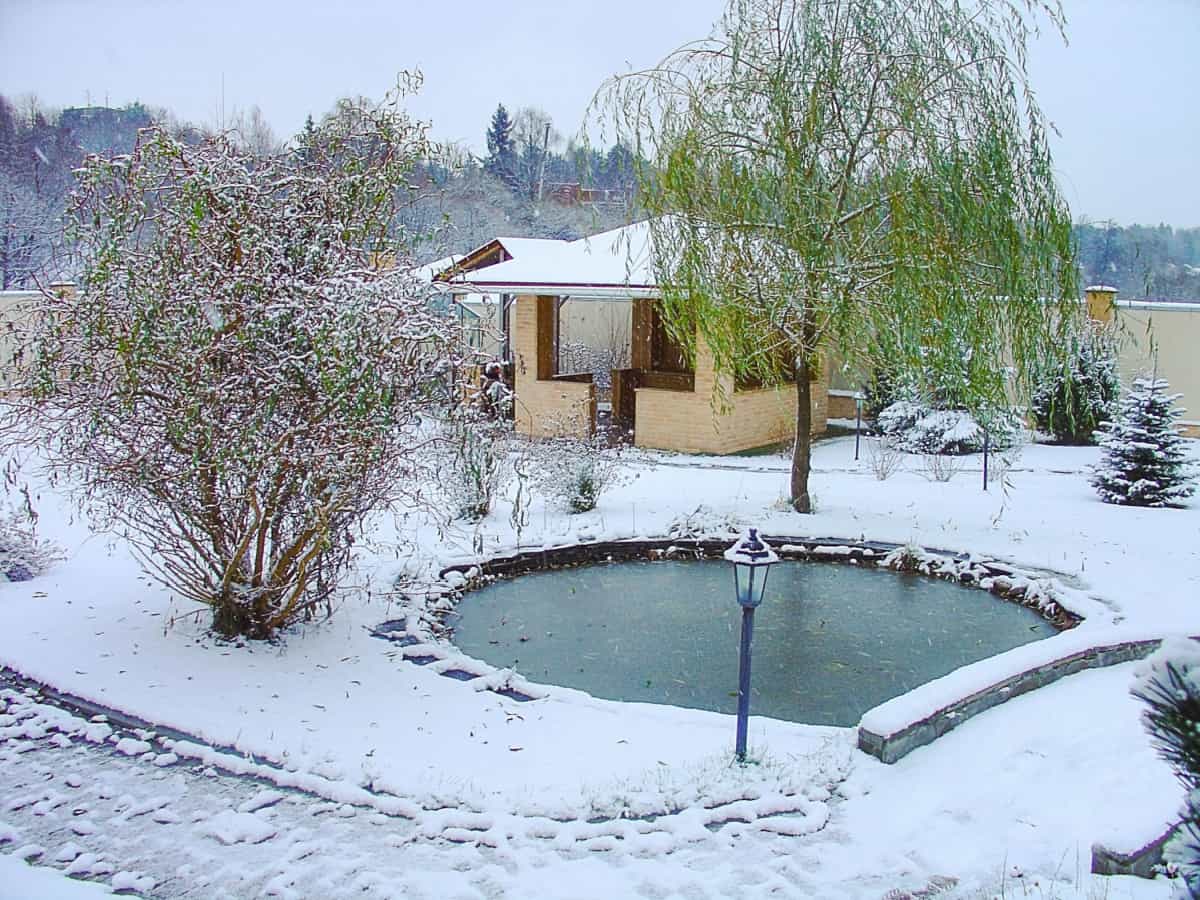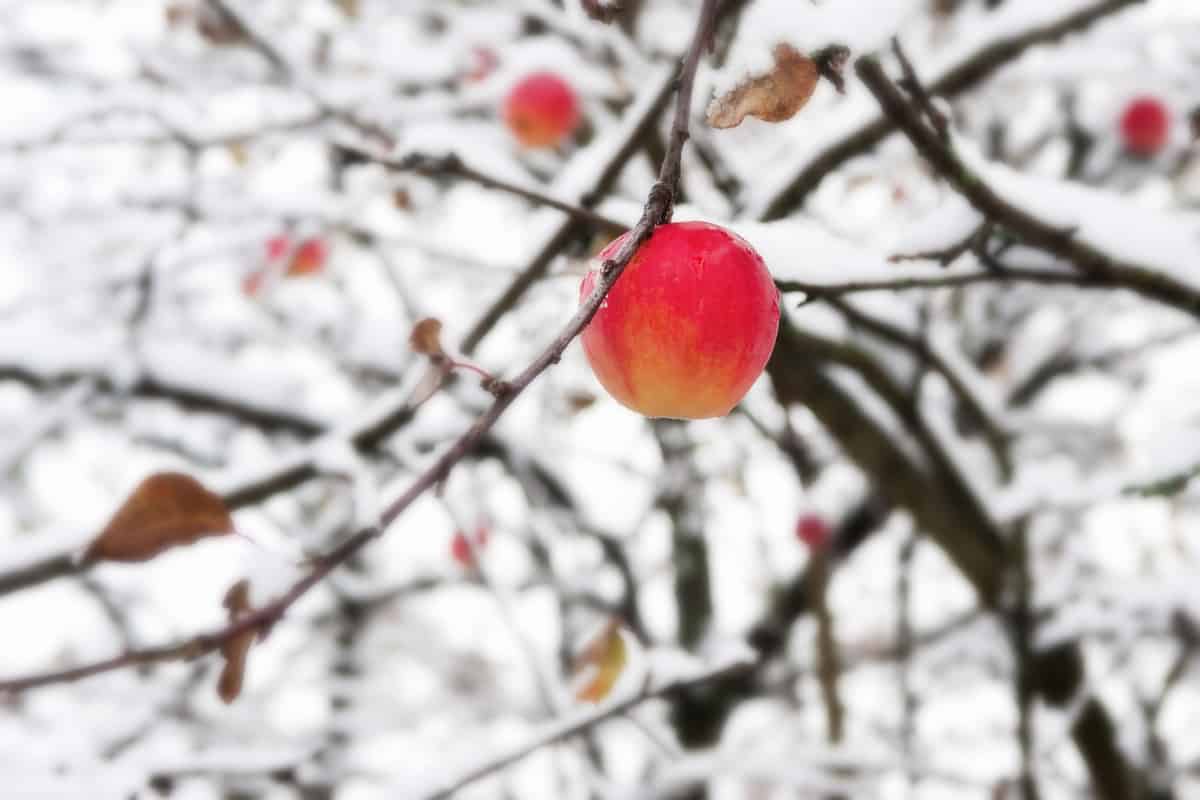Edible landscaping is a wonderful way to combine the beauty of nature with the practicality of growing your own food.
For our readers living in USDA Zone 3, it's essential to choose plants that are hardy enough to withstand the region's harsh winters.

Edible landscaping is an innovative approach to gardening that combines the beauty and function of landscaping with the practical benefits of food production.
This technique is not only sustainable but also adds a unique aesthetic appeal to any yard.
This article aims to guide homeowners in USDA Zone 3 in creating their edible landscapes.
Overview of USDA Zone 3
USDA Zone 3 is one of the coldest agricultural zones in the United States.

It covers parts of Alaska, the northernmost regions of the Contiguous United States, and high-altitude areas.
The winter temperatures in this zone can drop to -40 degrees Fahrenheit. Given these conditions, not all plants can survive in Zone 3.
However, there are still many edible plants suitable for this zone, and we'll explore them in this guide.
Benefits of Edible Landscaping in Zone 3
Gardening even in the coldest regions can bring big benefits not just for aesthetics but also for survival.

Here are some of the reasons to start edible gardening if you're in Zone 3:
Food production
The trees and plants cultivated in your yard can provide fruits, nuts, vegetables, and herbs for you and your family to consume and save on grocery costs.
It also ensures you have access to fresh, organic produce within reach even during the harshest and coldest weather conditions.
Aesthetic Appeal
Edible landscaping can be as beautiful as traditional landscaping.
With careful planning, you can enjoy a yard that is both visually appealing and productive.
Apple and cherry trees, for instance, offer stunning blossoms in the spring.
Biodiversity
Edible landscapes can help promote biodiversity by providing food and shelter for local wildlife, including birds, insects, and beneficial pollinators like bees and butterflies.
The presence of these creatures can also contribute to the health and productivity of your garden.
Selecting the Right Plants for Zone 3
When planning an edible landscape for USDA Zone 3, it's essential to choose plants that can withstand the region's challenging conditions.
This zone experiences cold winters and a shorter growing season, so the plants you select should be hardy and capable of thriving under these conditions.
Fruit Trees You Can Grow in Zone 3
Here's a guide to some of the best fruit trees you can plant in Zone 3 for an edible, aesthetically pleasing garden.
Apple Trees
Apple trees are often the first choice when it comes to planting fruit trees in your yard.

They come in a multitude of varieties, some of which are hardy enough to survive and thrive in Zone 3.
- Goodland apple: This apple variety can reach a height of 15 feet and produces medium to large apples that are crisp, juicy, and of medium sweetness. This tree is suitable for Zone 3 and typically bears fruit 3 years after planting.
- Norkent apple: The Norkent apple is reminiscent of the Golden Delicious, with a distinct apple-pear taste. This tree is hardy to Zone 2 and bears fruit 3 years after planting.
- Harcourt apple: This large, red apple variety is juicy with a sweet-tart taste. It's good for fresh eating, baking, cider, and juice, and stores well. The Harcourt apple is hardy to Zone 3.
- Dutchess of Oldenburg: A heritage apple that grows true from seed, the Dutchess apples are medium-sized, with a sweet-tart taste that makes them good for fresh eating, sauce, and cooking. This tree is hardy to Zone 3 and bears fruit 5 years after planting.
- Sweet Sixteen: This variety produces medium-sized apples with a unique taste reminiscent of cherries with spice and vanilla cream. The Sweet Sixteen is good for fresh eating and cooking, and is hardy to Zone 3b, though it takes a little longer to bear fruit than other cultivars, often 5 years after planting.
Remember that all apple trees need a pollinator that blooms at the same time.
Cherry Trees
Cherry trees can also be a great addition to an edible landscape in Zone 3.

- Montmorency cherry: While it is on the edge of the hardiness range for Zone 3, some gardeners have had success with it in colder climates. The tree produces large, tart cherries that are excellent for pies, jams, and jellies.
- Carmine Jewel cherry: This is a dwarf cherry tree that is a cross between a sour cherry and a Mongolian cherry. It is extremely hardy (Zone 2) and produces an abundance of dark, sweet cherries.
- Romeo cherry: This is another dwarf cherry tree that produces dark, sweet cherries. Like the Carmine Jewel, it is a cross between a sour cherry and a Mongolian cherry, and is very hardy (Zone 2).
- Juliet cherry: The Juliet cherry tree is a dwarf variety that produces large, sweet cherries with a high sugar content. It is hardy to Zone 2, reaches a height of 6.5-10 feet, and begins to bear fruit 3-4 years after planting.
For a list of more trees suitable for Zone 3, read here: 18 Optimal Trees for USDA Zone 3
Vegetables You Can Grow in Zone 3
When it comes to growing vegetables in USDA Zone 3, selecting cold-hardy varieties is crucial to ensure a successful harvest.

Here are some popular options for vegetables that thrive in Zone 3:
Leafy Greens
Cold-hardy leafy greens such as kale, spinach, Swiss chard, and lettuce are excellent choices for Zone 3.
These vegetables can tolerate cooler temperatures and even some frost.
Consider varieties like 'Winterbor' kale, 'Bloomsdale' spinach, 'Bright Lights' Swiss chard, and 'Arctic King' lettuce.
Root Vegetables
Root vegetables are well-suited to Zone 3 as they can handle the cold temperatures.
Some examples include carrots, beets, radishes, turnips, and parsnips.
Look for varieties like 'Nantes' carrots, 'Detroit Dark Red' beets, 'Cherry Belle' radishes, 'Purple Top White Globe' turnips, and 'Harris Model' parsnips.
Cruciferous Vegetables
Cruciferous vegetables like cabbage, broccoli, cauliflower, and Brussels sprouts can thrive in Zone 3.
Choose cold-hardy varieties such as 'Golden Acre' cabbage, 'Green Goliath' broccoli, 'Snow Crown' cauliflower, and 'Long Island Improved' Brussels sprouts.
Peas
Peas are a cool-season crop that can be grown successfully in Zone 3.
Both shelling peas and snow peas can be planted.
Consider varieties like 'Green Arrow' shelling peas and 'Oregon Sugar Pod' snow peas.
Beans
Bush beans and pole beans are suitable for Zone 3.
These legumes prefer warmer temperatures, so it's essential to choose early-maturing varieties.
Look for 'Provider' bush beans and 'Kentucky Blue' pole beans.
Potatoes
Potatoes are a versatile and rewarding crop for Zone 3.
Plant early-maturing varieties like 'Norland' and 'Yukon Gold' to ensure a good harvest before the frost arrives.
Herbs You Can Grow in Zone 3
Incorporating herbs into your edible landscape can add flavor, fragrance, and beauty to your garden.

Fortunately, there are several herbs that are well-suited to grow in USDA Zone 3.
Here are some popular options for herbs in Zone 3:
Chives
Chives are a hardy herb that grows well in Zone 3.
They produce clumps of slender, onion-flavored leaves that can be used in salads, soups, and many other dishes.
Chives also bear attractive purple flowers that are both decorative and edible.
Sage
Sage is a perennial herb that is known for its aromatic leaves. It adds a savory and earthy flavor to dishes.
Sage is a hardy herb that can withstand cold temperatures in Zone 3.
It is commonly used in stuffing, roasted meats, and sauces.
Thyme
Thyme is a versatile herb that comes in various cultivars.
It has a delightful fragrance and is used in a wide range of culinary applications.
Some cold-hardy thyme varieties for Zone 3 include 'English Thyme' and 'Creeping Thyme.'
Thyme is excellent for flavoring meats, soups, and stews.
Parsley
Parsley is a biennial herb that is commonly used as a garnish and flavor enhancer. It has bright green, curly, or flat leaves.
Parsley is hardy in Zone 3 and can be harvested throughout the growing season.
It is rich in vitamins and minerals and adds freshness to salads, sauces, and marinades.
Mint
Mint is a fragrant herb that is easy to grow in Zone 3. There are many mint varieties available, such as spearmint and peppermint.
Mint is commonly used in teas, desserts, and cocktails.
However, it can be invasive, so it's best to plant mint in containers or use barriers to control its spread.
Oregano
Oregano is a flavorful herb that is commonly used in Mediterranean cuisine. It has a robust taste and aroma.
Oregano is a hardy perennial herb that can withstand the cold temperatures of Zone 3.
It is a great addition to tomato-based dishes, roasted vegetables, and marinades.
Rosemary
Rosemary is an aromatic herb with needle-like leaves.
It has a distinct pine-like fragrance and is often used in roasts, stews, and bread.
While rosemary is not as cold-hardy as some other herbs, it can still survive in Zone 3 with proper protection, such as mulching or bringing potted plants indoors during winter.
Embracing the Challenges of Zone 3 Gardening
Creating an edible landscape in USDA Zone 3 is not only possible but also highly rewarding.
Embracing the challenges and unique opportunities of Zone 3 gardening allows you to connect with nature, promote sustainability, and enhance the beauty of your outdoor space.
Edible landscaping in Zone 3 offers a harmonious blend of aesthetics, functionality, and environmental stewardship.
Happy gardening in USDA Zone 3, and may your edible landscape bring you years of beauty, sustenance, and enjoyment!
For more Zone 3 gardening tips, check out these other articles:
The 17 Best Plants to Grow in Zone 3b (-35 to -30 °F/-37.2 to -34.4 °C)
The 17 Best Plants to Grow in Zone 3a (-40 to -35 °F/-40 to -37.2 °C)
